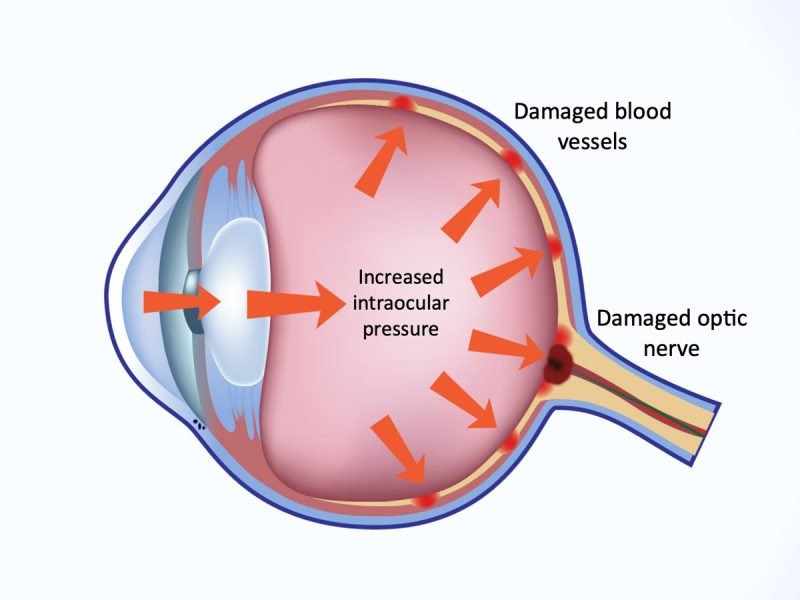Glaucoma (High Eye Pressure)
Glaucoma (High Eye Pressure)

Glaucoma, commonly known as "eye pressure", is damage to the optic nerve due to frequent increases in intraocular pressure. As a result, a person's field of vision is gradually narrowed. Glaucoma, an insidious disease that manifests itself in the last stages of the disease, can cause severe damage to the optic nerve that cannot be repaired if diagnosed late.
How does glaucoma, characterized by high eye pressure, appear?
Elevated intraocular pressure predisposes individuals to an increased risk of developing glaucoma, although not all individuals with high eye pressure develop this condition. Glaucoma can appear due to various factors. Within the choroid of the eye, a fluid known as aqueous humor is produced. Proper eye function relies on a delicate balance of production and drainage of this fluid, maintaining optimal pressure levels. Inadequate drainage leads to fluid accumulation, increasing intraocular pressure and causing optic nerve damage.
Who is susceptible to glaucoma?
Genetic predisposition plays an important role in the risk of glaucoma. Individuals with a family history of the condition face increased susceptibility, suggesting possible genetic abnormalities that increase vulnerability.
Additionally, individuals age 40 and older are at a higher risk of developing glaucoma.
Treatment of glaucoma
The main ways to treat glaucoma:
- Medical treatment
- Laser treatment
- Surgery
If, despite medical or laser treatment, the eye pressure does not decrease and the disease continues to progress, in most cases, the treatment will be surgical.
Are you ready to see the world with clear and vivid eyes?
Frequently Asked Questions
Glaucoma occurs as a result of the accumulation of intraocular fluid in the eye, which provokes an increase in eye pressure. For eye pressure of 9 mm Hg. Art. is the lower limit, and 22 mm Hg. Art. is considered as the upper limit.
Glaucoma is a disease that can appear in both eyes at the same time or in one eye.
Increased eye pressure is one of the most dangerous conditions. As eye pressure increases, the field of vision narrows and can cause permanent damage. For this reason, it is very important to analyze the symptoms well and observe them regularly to protect the health of the eyes.
Glaucoma is a disease that can lead to blindness if left untreated. Its treatment cannot correct the nerve damage in the eye, but it can stop it from progressing and getting worse. The main goal of treatment is to ensure that the patient can see for the rest of his life.
Although the pressure below 20 mm Hg. Art. is usually considered normal when the eye pressure is measured, it should not be forgotten that there are many types of glaucoma. There are many types of glaucoma such as pigmentary, neovascular, exfoliative and congenital glaucoma. For this reason, in addition to measuring eye pressure, it is necessary to measure the thickness of the cornea and examine the optic nerve and retina.


